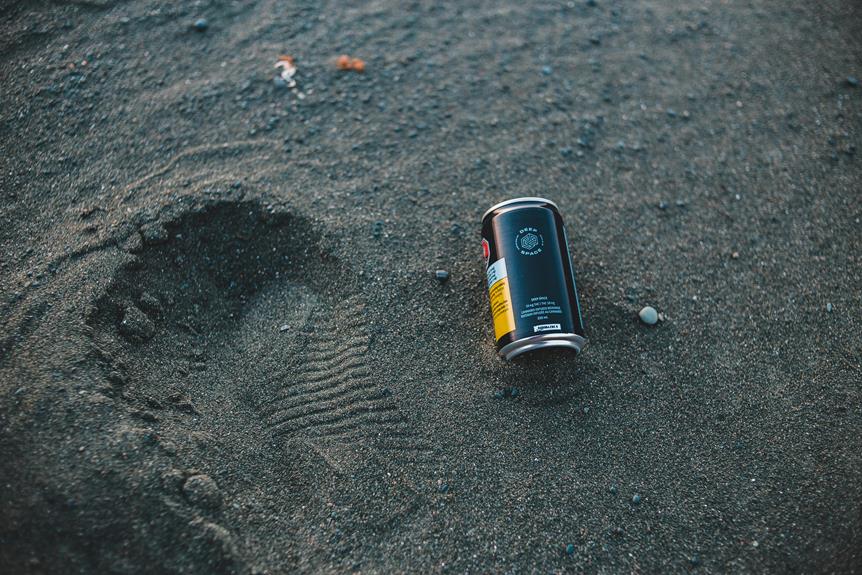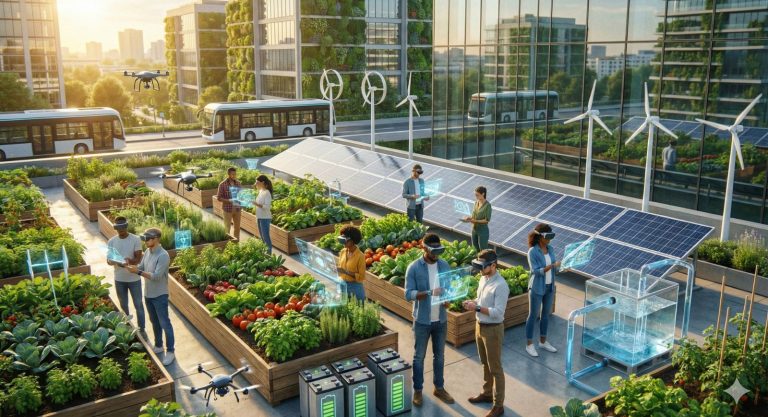Are you ready to make a difference? We’ve got five effective ways of reducing carbon footprint through recycling.
By choosing the right recycling program, reducing waste with proper sorting, upcycling old items, minimizing packaging and plastic waste, and educating others on the importance of recycling, we can all contribute to a cleaner, greener planet.
Let’s join forces and take action today! Together, we can make a lasting impact.
Choosing the Right Recycling Program
When it comes to reducing our carbon footprint through recycling, we need to start by choosing the right recycling program. A well-designed recycling program can bring a multitude of benefits to both individuals and communities.
Firstly, it helps conserve valuable resources by reusing materials instead of extracting new ones. This reduces the need for energy-intensive processes, which in turn lowers greenhouse gas emissions.
Secondly, recycling programs create job opportunities in waste management and recycling industries, contributing to the local economy. Despite these benefits, there are challenges that must be overcome.
One challenge is the lack of awareness and understanding among individuals about the importance and process of recycling. Education and outreach programs can help address this issue.
Another challenge is the lack of infrastructure and funding for recycling programs in certain areas. Governments and organizations need to invest in recycling infrastructure to ensure effective and widespread recycling.
Reducing Waste With Proper Sorting
By properly sorting our waste, we can effectively reduce our carbon footprint through recycling. Here are three actionable tips to help us reduce waste and contribute to a cleaner environment:
- Separate recyclables: When disposing of waste, sort items into different recycling bins for paper, plastic, glass, and metal. This ensures that materials can be properly processed and reused, reducing the amount of waste sent to landfills.
- Composting options: Instead of throwing organic waste like food scraps and yard trimmings into the trash, consider composting. Composting helps break down organic matter and creates nutrient-rich soil, reducing the need for chemical fertilizers and reducing landfill waste.
- Avoid contamination: Make sure to rinse and clean recyclable items before placing them in the recycling bin. Contaminated materials can lead to the rejection of entire batches of recycling, wasting resources and increasing landfill waste.
Upcycling: Giving New Life to Old Items
One way we can give new life to old items is through upcycling. Upcycling involves repurposing furniture and transforming old clothes into something new and useful. This not only reduces waste but also allows us to tap into our creativity and create unique pieces that reflect our personal style.
Repurposing furniture can involve sanding, painting, or reimagining the purpose of an item. Old clothes can be transformed through alterations or by using the fabric to create new garments or accessories.
By upcycling, we can extend the lifespan of our belongings, reducing the need for new purchases and ultimately reducing our carbon footprint.
Related Post: The Ultimate Guide to Battery Reconditioning: Resurrecting Dead Batteries.
Minimizing Packaging and Plastic Waste
How can we further reduce waste and shrink our carbon footprint while addressing the issue of packaging and plastic waste? Here are three actionable ways to minimize packaging and plastic waste:
- Reduce single-use plastics: Opt for reusable alternatives like stainless steel water bottles, cloth grocery bags, and glass food containers. By making these small changes, we can significantly reduce the amount of plastic waste that ends up in our landfills and oceans.
- Promote reusable alternatives: Encourage businesses and individuals to adopt sustainable practices by promoting the use of reusable packaging materials. This could include using refillable containers for personal care products, bringing your own coffee cup to the café, or using beeswax wraps instead of plastic cling film.
- Advocate for sustainable packaging: Support companies that prioritize sustainable packaging materials such as biodegradable or compostable options. By choosing products packaged in eco-friendly materials, we can help drive the demand for more responsible packaging practices.
Together, we can make a positive impact on our environment by reducing single-use plastics and promoting reusable alternatives. Let’s take action now to minimize packaging and plastic waste.
Educating Others on the Importance of Recycling
We can effectively educate others on the importance of recycling by sharing specific statistics and success stories. Promoting sustainable practices and encouraging eco-friendly habits are key to reducing our carbon footprint. By educating others, we can inspire them to take action and make a positive impact on the environment.
For example, we can share statistics on the amount of waste that can be saved through recycling, such as the fact that recycling one ton of paper saves 17 trees and 7,000 gallons of water. We can also share success stories of individuals or communities that have implemented recycling programs and seen significant reductions in waste.
Conclusion
In conclusion, by implementing these five effective tips to shrink your carbon footprint through recycling, you can make a significant impact on the environment.
From choosing the right recycling program to educating others on the importance of recycling, every small action adds up to create a greener future.
So, let’s join forces and become recycling superheroes, saving the planet one bottle, one can, and one piece of plastic at a time!
Together, we can make a world of difference.




